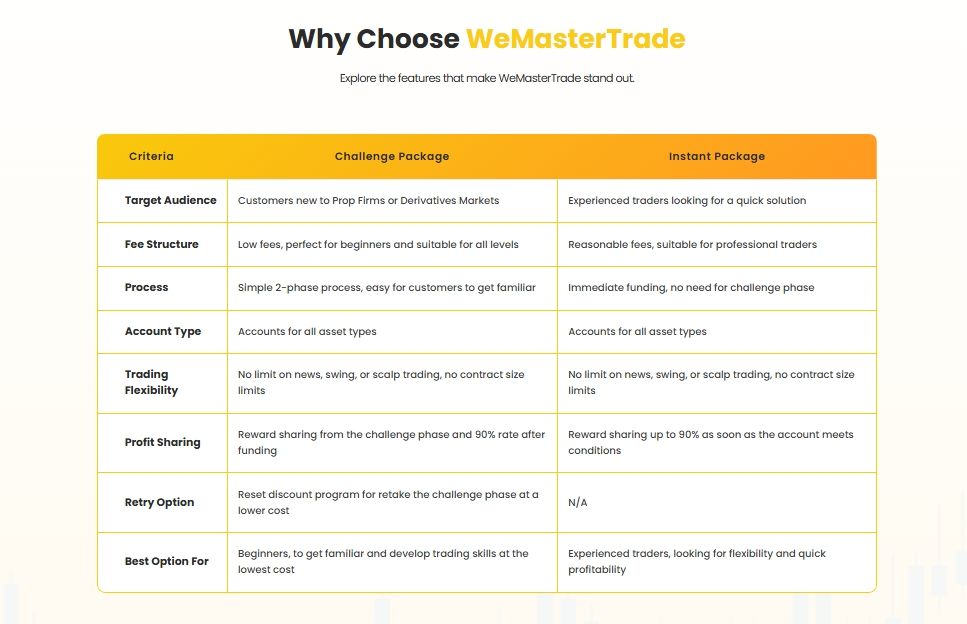When winter arrives, small dog breeds with sensitive skin face a unique challenge. Their compact size means they lose body heat quickly, yet their delicate skin can react negatively to many common fabrics found in pet clothing. Owners of Chihuahuas, Yorkshire Terriers, and other petite breeds often struggle to find winter wear that keeps their companions warm without triggering allergic reactions, skin irritation, or uncomfortable chafing.
The solution lies in selecting hypoallergenic materials specifically designed for sensitive pets, combined with precise sizing that ensures comfort without restriction. Unlike human clothing where minor fit issues are tolerable, dogs require garments that allow natural movement, proper ventilation, and temperature regulation. This article explores how to identify the right hypoallergenic fabrics for your small dog’s winter wardrobe and provides practical guidance on achieving the perfect fit. Understanding these essential elements will help you make informed decisions that keep your furry friend both stylish and comfortable throughout the coldest months.
Understanding the Importance of Proper Sizing for Dog Clothes
The difference between a comfortable winter coat and a frustrating garment often comes down to precise measurements. Small dogs need clothing that fits their unique proportions without bunching around the legs or pulling across the chest. An ill-fitting sweater can restrict breathing, limit mobility during walks, or create pressure points that irritate sensitive skin. Conversely, overly loose clothing defeats its purpose by allowing cold air to circulate freely, while excess fabric can tangle around legs or catch on objects during outdoor activities.
To measure your dog accurately, you’ll need three key dimensions. First, measure the neck circumference at its widest point where a collar naturally sits. Second, measure the chest girth at the broadest part, typically just behind the front legs. Finally, measure the back length from the base of the neck to the base of the tail, not including the tail itself. Always add one to two inches to these measurements for comfort, particularly around the chest and neck areas where restriction causes the most discomfort.
Temperature regulation is equally critical when considering fit. A properly sized garment creates a thin insulating layer of warm air between the fabric and your dog’s body. Too tight, and this layer disappears while potentially causing your pet to overheat during activity. Too loose, and the insulating effect vanishes entirely. Watch for signs of improper fit during your dog’s first wearing: excessive scratching, reluctance to move, panting indoors, or attempting to remove the clothing all indicate adjustments are needed before venturing into cold weather.
Stylish Options for Small Dog Breeds
Winter dog clothing for small dogs has evolved far beyond basic functionality, offering designs that reflect both seasonal trends and individual personality. Contemporary pet fashion features classic patterns like Fair Isle knits, houndstooth checks, and plaid designs that complement winter wardrobes while providing necessary warmth. Solid colors in jewel tones—deep burgundy, forest green, and navy blue—offer versatility for dogs who wear clothing frequently, while playful prints featuring snowflakes, reindeer, or geometric patterns add festive charm during holiday months.
The key to successful styling lies in balancing aesthetic appeal with practical design features. A visually striking argyle sweater loses its appeal if the armholes restrict shoulder movement or the hem rides up during walks. Look for garments where decorative elements don’t compromise essential functions: reinforced seams that maintain integrity through active play, strategically placed openings for leash attachment, and hemlines that stay in position without constant adjustment. Details like ribbed cuffs prevent cold air from entering at the legs and neck while adding visual interest to the overall design.
Functionality should always guide your style choices, particularly for active small breeds. A lightweight quilted vest provides core warmth without restricting leg movement for dogs who love to run and jump. Hooded designs offer extra protection for breeds with minimal ear fur, though the hood must fit properly to avoid obstructing vision or hearing. Consider your dog’s daily activities when selecting styles—a fashion-forward turtleneck might photograph beautifully but proves impractical for dogs who spend extended time outdoors or engage in vigorous play.
Introducing Hypoallergenic Fabrics
Hypoallergenic fabrics are materials specifically processed or naturally composed to minimize allergic reactions and skin irritation in sensitive individuals. For dogs with delicate skin, these fabrics reduce exposure to chemical treatments, synthetic dyes, and rough textures that commonly trigger itching, redness, or rashes. The term “hypoallergenic” indicates that a material has been tested or naturally possesses properties that make allergic responses less likely, though no fabric can guarantee zero reactions for every animal. What makes these materials particularly valuable for winter wear is their ability to provide warmth while maintaining breathability, preventing the moisture buildup that often exacerbates skin conditions.
The structure of hypoallergenic fabrics plays a crucial role in their effectiveness. Natural fibers with smooth surfaces create less friction against skin compared to synthetic materials with irregular textures. These fabrics typically avoid harsh chemical finishes, flame retardants, or formaldehyde-based treatments that can leach onto skin during wear. Additionally, hypoallergenic materials often possess natural moisture-wicking properties that draw perspiration away from the body, keeping skin dry and reducing the risk of bacterial growth or fungal infections that thrive in damp environments.
Common hypoallergenic materials suitable for dog clothing include organic cotton, bamboo fiber, and merino wool. Organic cotton grows without pesticides or synthetic fertilizers, resulting in a pure fiber free from chemical residues. Bamboo fabric offers natural antimicrobial properties that resist odor and bacteria while providing exceptional softness. Merino wool, despite being an animal fiber, features ultra-fine strands that feel gentle against skin and naturally regulates temperature without causing overheating. Each material brings distinct advantages, making them suitable for different climates, activity levels, and specific sensitivities your dog may experience during winter months.
Cotton: A Comfortable Choice
Organic cotton stands as the most accessible hypoallergenic option for winter dog clothing, offering reliable warmth without chemical irritants. The fabric’s natural breathability allows air circulation while its soft texture minimizes friction against sensitive areas like the underarms and belly. When selecting cotton garments, prioritize those labeled “100% organic cotton” rather than conventional cotton, which may retain pesticide residues even after manufacturing. The fabric performs best in moderate winter conditions or as a layering piece under heavier coats during extreme cold.
Maintaining cotton clothing requires straightforward care that preserves its hypoallergenic properties. Wash garments in fragrance-free, hypoallergenic detergent using warm water rather than hot, which can break down fibers and cause shrinkage. Avoid fabric softeners entirely, as these products coat fibers with chemicals that defeat the purpose of choosing hypoallergenic materials. Air drying extends the garment’s lifespan better than machine drying, though low heat settings work acceptably if time is limited. Inspect cotton items regularly for pilling or thinning areas that might create rough patches against your dog’s skin.
Bamboo: The Eco-Friendly Option
Bamboo fabric delivers exceptional softness that rivals cashmere while naturally resisting bacteria and odor without chemical treatments. The material’s thermal-regulating properties make it particularly valuable for small dogs who transition frequently between indoor and outdoor environments, as it adjusts to temperature changes more effectively than cotton. Bamboo fibers contain a natural bio-agent called “bamboo kun” that provides antimicrobial protection, reducing the need for frequent washing while keeping the garment fresh. This characteristic proves especially beneficial for dogs with skin conditions aggravated by excessive bathing or detergent exposure.
Sustainable harvesting practices make bamboo an environmentally responsible choice that doesn’t compromise quality. The plant grows rapidly without requiring pesticides, fertilizers, or significant water resources, regenerating from its root system after cutting. However, examine the manufacturing process when purchasing bamboo clothing—mechanically processed bamboo retains more natural properties than chemically processed rayon made from bamboo. Look for certifications like OEKO-TEX Standard 100, which verifies the fabric contains no harmful substances. Bamboo garments require gentle washing in cold water and should be reshaped while damp to maintain their original fit and softness.
Practical Tips for Choosing the Right Winter Dog Clothing
Begin your search by assessing your dog’s specific needs rather than browsing randomly through available options. Consider the typical duration of outdoor exposure your dog experiences—a quick five-minute bathroom break requires different protection than a thirty-minute walk. Evaluate your local winter conditions: dry cold demands different fabric choices than wet, snowy climates where moisture resistance becomes essential. Dogs with existing skin conditions need garments you can wash frequently without degradation, while dogs with thick undercoats may only need coverage for their chest and belly rather than full-body garments.
When shopping, examine construction quality with the same scrutiny you’d apply to your own clothing. Check that seams lie flat without exposed edges that might rub against skin, and verify that any tags are external or easily removable. Test closures like velcro, snaps, or zippers to ensure they operate smoothly without catching fur. For hypoallergenic garments specifically, request fabric composition details and look for certifications that verify chemical-free processing. Many specialty pet retailers and brands like fitwarm offer detailed sizing charts and fabric information that help you make informed decisions for dogs with sensitive skin, which proves invaluable when addressing sensitivities that may not appear immediately.
Introduce new clothing gradually to help your dog adjust comfortably. Start with short indoor wearing sessions of five to ten minutes, offering treats and praise to create positive associations. Monitor your dog’s skin closely after the first few wearings, checking for any redness, scratching, or behavioral changes that might indicate irritation. Keep multiple garments in rotation to allow thorough drying between uses, as damp fabric against skin can negate the benefits of hypoallergenic materials. Finally, reassess fit periodically throughout winter, as weight fluctuations or coat thickness changes may require sizing adjustments to maintain optimal comfort and protection.
Keeping Your Small Dog Comfortable All Winter Long
Protecting your small dog during winter requires thoughtful attention to both fabric selection and proper fit. Hypoallergenic materials like organic cotton and bamboo provide essential warmth while eliminating the chemical irritants and rough textures that trigger reactions in sensitive pets. These natural fibers offer breathability, moisture management, and antimicrobial properties that conventional fabrics cannot match, making them invaluable for dogs prone to skin conditions or allergies.
Remember that even the highest-quality hypoallergenic garment fails if sizing is incorrect. Accurate measurements of your dog’s neck, chest, and back length form the foundation of comfortable winter wear that allows natural movement without restriction or excess fabric. Regular monitoring during the first wearings helps identify potential issues before they develop into serious irritation, while rotating multiple garments ensures each piece dries thoroughly between uses.
By combining hypoallergenic fabrics with precise sizing and gradual introduction, you create a winter wardrobe that keeps your small dog comfortable, healthy, and protected throughout the coldest months. Your investment in quality materials and proper fit pays dividends in your pet’s wellbeing, reducing skin problems while ensuring they enjoy outdoor activities regardless of temperature.














 Bitcoin
Bitcoin  Ethereum
Ethereum  Tether
Tether  XRP
XRP  USDC
USDC  Solana
Solana  TRON
TRON  Lido Staked Ether
Lido Staked Ether  Cardano
Cardano  Avalanche
Avalanche  Toncoin
Toncoin